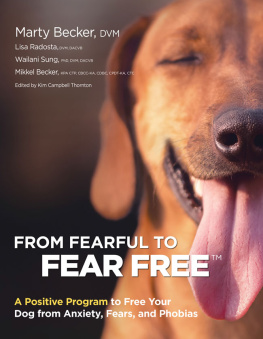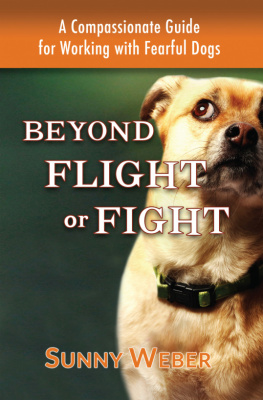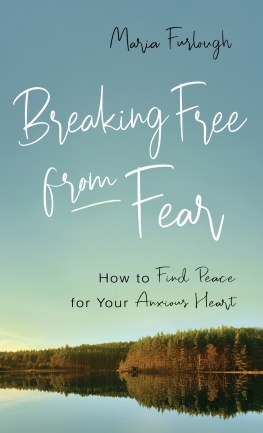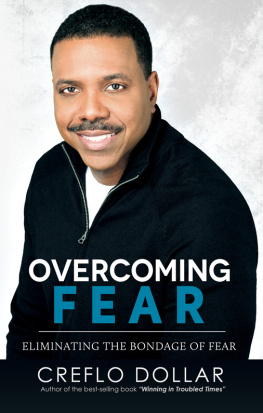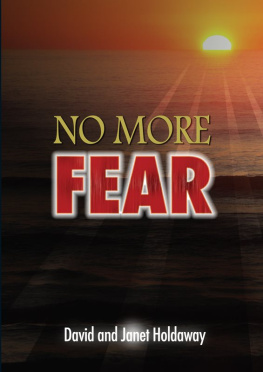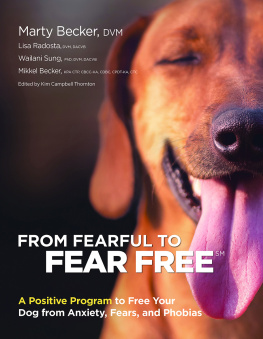Part I - Your Dogs Brain: Whats Really Going On in There
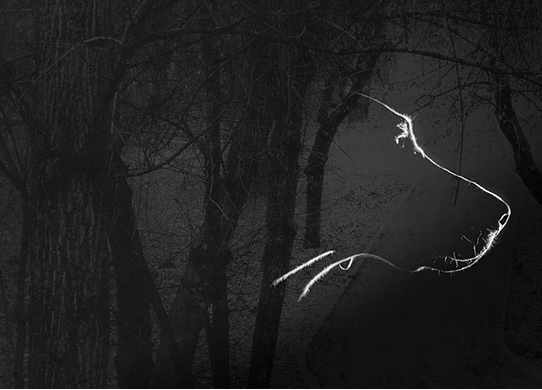
Chapter 1-Fear and Its Effects
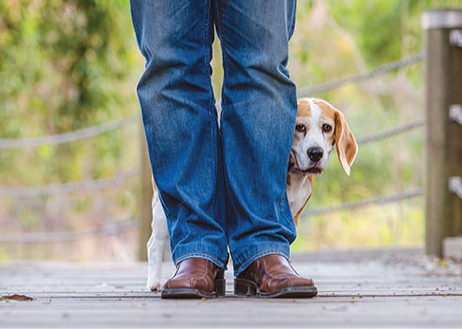
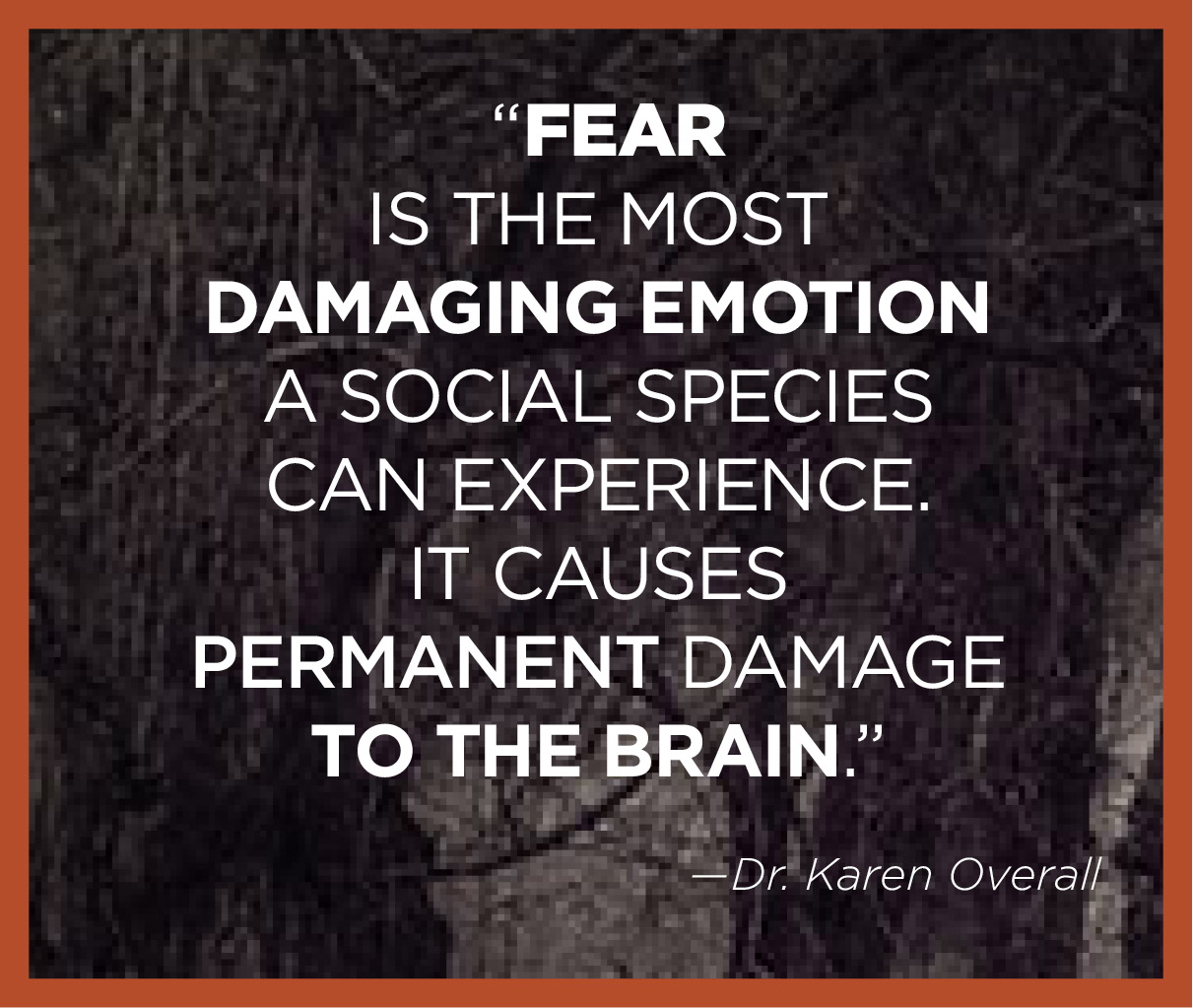
Do you remember the first time you felt severe fear? It was probably when you were a young child, and were not talking a Halloween-mask boo! Maybe your mother disappeared behind a rack of clothes in a store, and you didnt know where she was. Maybe you saw a shadow on the wall in your darkened bedroom. Or maybe you were frightened by the approach of an ominous stranger.
Fear is a universal reaction experienced by every species, including dogs. Its an emotional response caused by an encounter with anything, real or anticipated, that appears to be a threat: the disappearance of a loved one, the unknown, or something that experience teaches will cause pain (syringe + needle = ouch!).
Whether we are human or canine or some other species, our bodies experience changes in brain and organ function when we are afraid. When we are faced with danger, whether obvious or anticipated, our bodies spring into action. We breathe more rapidly, our heart rate increases, and our muscles tense up, right down to the thousands of individual hair follicles. In the blink of an eye, these physiological reactions alert the brain to the presence of a threat. Body and mind go into self-defense mode, commonly referred to as fight or flightprepare for a live-or-die battle or run for your life!
Fear helps humans and animals survive by allowing them to recognize danger and take action, whether its to freeze in place, hide, run away, fidget (bark or run in circles), or stand and defend themselves (or at least look and sound as if they could). Its an instinctive protection system, but it can also cause inappropriate responses that make life miserable for fearful pets and their people. Not just uncomfortable, which is bad enough, but damaging physiologically and emotionally. In short, think PTSD (post-traumatic stress disorder) for pets.
When fear or anxiety takes over a dogs life, it can become impossible to take him to the veterinarian or groomer, have him ride comfortably in the car, go for a walk around the neighborhood, leave him home alone, or have friends or family visit. A fearful dog may become aggressive, destructive, or withdrawn. He may become physically ill with vomiting or diarrhea when he is placed in a situation that he fears, or he may refuse to eat at all. Thats no way to livefor you or your dog! Thats why it is vital that we take the necessary steps to reduce or remove the triggers for anxiety and fear in when they arise in animals lives and vow to always travel along a path that moves both pets and humans from fearful to Fear Free.

The Elements of Fear
We are fortunate to be living in a time when we have a better understanding of brain chemistry as it relates to fear than we had in the past. Understanding and recognizing a dogs fear and anxietyor the potential for those emotionshelps us increase his comfort level in stressful situations as well as help him cope with his stress in constructive ways. But first, lets take a look at how fear works.
Your dogs fear response begins when information is sent from the sensory cortex. This is where the brain receives the signals from the outside world. For example, when your dog hears the can opener, this information is transmitted to the auditory cortex, causing him to anticipate delicious food.
Neurochemicals, such as epinephrine and norepinephrine, put the body on high alert. In an instant, they speed up the heart rate, increase blood flow to the muscles, dilate air passages for better lung capacity, and release glucose for energy.
Cortisol, known commonly as the stress hormone, is a natural steroid that increases blood sugar, enables the brain to make better use of glucose, and increases availability of substances that repair body tissue. Cortisol suppresses nonessential body functionssuch as the digestive, reproductive, and immune systemsthat might hamper a fight, flight, freeze, or fidget response. It also communicates with areas of the brain that control fear. In normal amounts, cortisol plays an important role in fighting stress as well as regulating other facets of good health, such as weight, tissue structure, and skin condition.
Fear Factor
You may remember seeing a news story circulating on social media about a woman who jumped out of a moving car, leaving her nine-year-old child in the backseat. What motivated her to abandon her child in such a dangerous situation? An innate (and potentially deadly, in this case) fear of spiders. While backing out of her driveway, the woman saw a spider in her car, and her first instinct was to escape from it. Her fearful reaction to the spider was so intense that she simply reacted. That fear overcame the normal instinct of a mother to protect her child. Now, if rational people can respond this way when they are afraid, its easy to understand how our dogs might also exhibit fear in situations or circumstances in which they have no control.
Dr. Wailani Sung
The bodys response to this influx of hormones occurs rapidly, without conscious thought or action. The rush of neurochemicals and hormones throughout the body and brain aid in what is called memory consolidation and retrieval in a part of the brain called the medial prefrontal cortex. In short, your dog remembers very well what happened to him when he was scared. When he is back in that situation again, his body will be able to access that memory quickly. He will remember that incident, which caused him fear and rocked his entire body, more clearly than he will remember the half hour you spent teaching him how to high-five the weekend before.
While, in the wild, this type of memory can save an animals life (i.e., theres a predator in that area so I should avoid going there) as he goes about his daily activities, this avoidance mechanism can mean that a pet doesnt receive proper veterinary or preventive care, putting his health (and, by extension, his humans health) at serious risk.
Their recall ability is what helps dogs know how to react to a threat, but it can also be what gets them into fear-related trouble. As you probably know, dogs are extremely observant. They spend their lives watching us and are good at learning from experience and observation. This movement from the recliner means mom is going to the bathroom, whereas this seemingly same motion means were going for a walk. Puppies first lessons on responding to threats come from their mother, and they quickly pick up additional fear reactions as they interact with other dogs, other animals, and with humans (especially those who can unintentionally inflict pain or fear, such as members of the veterinary team). Once acquired, reactions to fear are not easily forgotten and may intensify with experience.
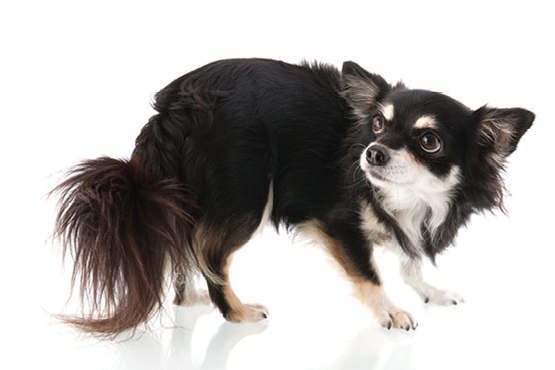
Brain Anatomy: Amygdala
The amygdala is a small, almond-shaped part of the brain that receives information from all of the sensory systems in the body. Think of it as a processing and distribution center for environmental stimuli, turning sights and sounds into emotional responses. The signals are then broadcast to other parts of the brain, such as the hypothalamus (panting, trembling, increased blood flow to muscles), brainstem (fight, flight, freeze, fidget), and cerebral cortex (emotional experience). When a dog is frightened, on the surface we see only that he is hiding under a chair, trembling, but major events have occurred inside his body, altering the way he feels emotionally and physically and ensuring that he will never forget that particular experience.
Next page
